Are you looking to start a new hobby that is both exciting and challenging? Then bouldering and rock climbing might just be the right activity for you. Both sports are incredibly fulfilling, offering unique rewards with every attempt. While they may look similar, the two activities have distinct differences that set them apart from one another – if you aren’t quite sure what those differences are, then this post will help clear it up! Learn about the intricate details of each style of climbing today and discover why these individual pursuits can be so rewarding.
What is Bouldering?
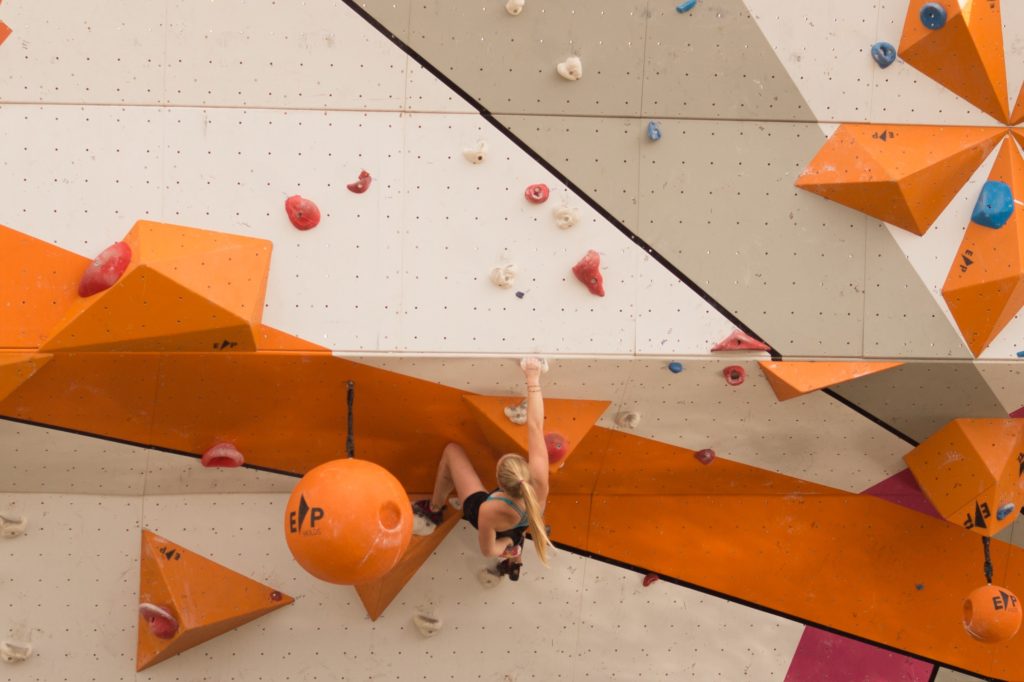
Bouldering is a form of rock climbing that is performed on small rock formations or artificial walls, known as boulders, without the use of ropes or harnesses. Bouldering routes, also known as “problems,” typically range in difficulty from easy to extremely difficult and are usually no more than 20 feet in height. Climbers use climbing shoes, chalk, and crash pads to protect themselves from falls.
Bouldering is a form of climbing that focuses on movement and technique rather than endurance. It is also a way to practice specific climbing moves and sequences, and to test one’s strength and skill. Many climbers also enjoy bouldering for its simplicity and immediacy, as it doesn’t require the setup and maintenance of ropes, anchors and other gear.
What is Rock Climbing?
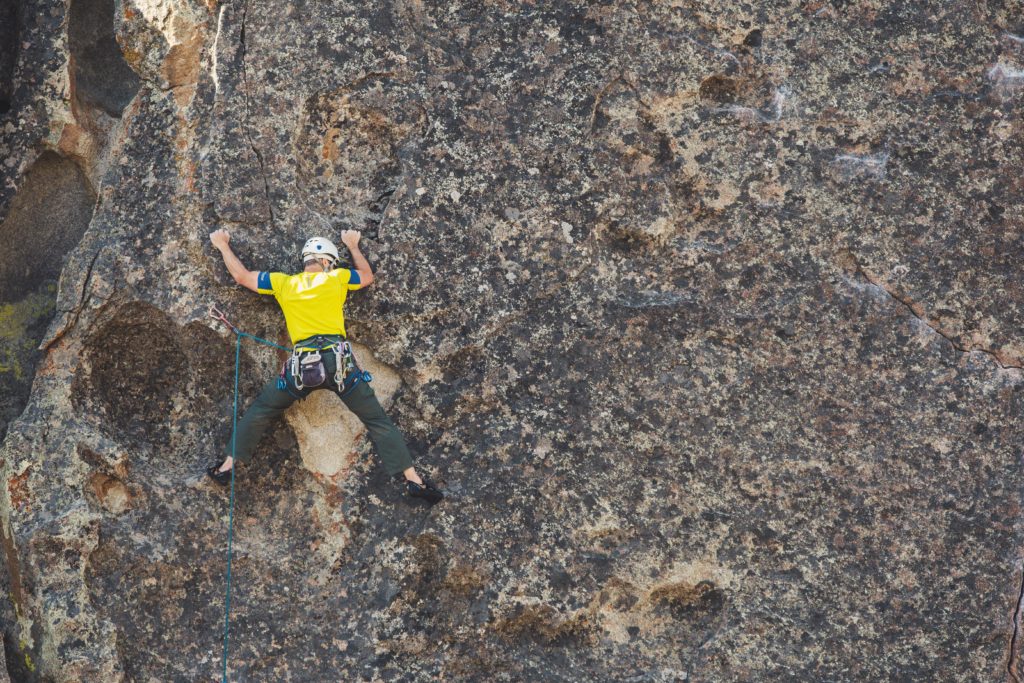
Rock climbing is an exhilarating and challenging outdoor activity that involves ascending natural rock formations using specialized gear and techniques. Whether you’re a beginner or an experienced climber, rock climbing offers an exciting way to explore the great outdoors and test your physical and mental limits.
There are two main types of rock climbing: traditional climbing and sport climbing. Traditional climbing, also known as trad climbing, involves placing gear such as camming devices, nuts, and hexes into the rock to create a secure belay system. Sport climbing, on the other hand, involves pre-placed bolts and anchors along the climbing route.
Both types of climbing require the use of specialized gear such as climbing shoes, a harness, and a helmet. Climbers also use ropes, carabiners, and other equipment to protect themselves in case of a fall.
The Difference Between Bouldering and Rock Climbing
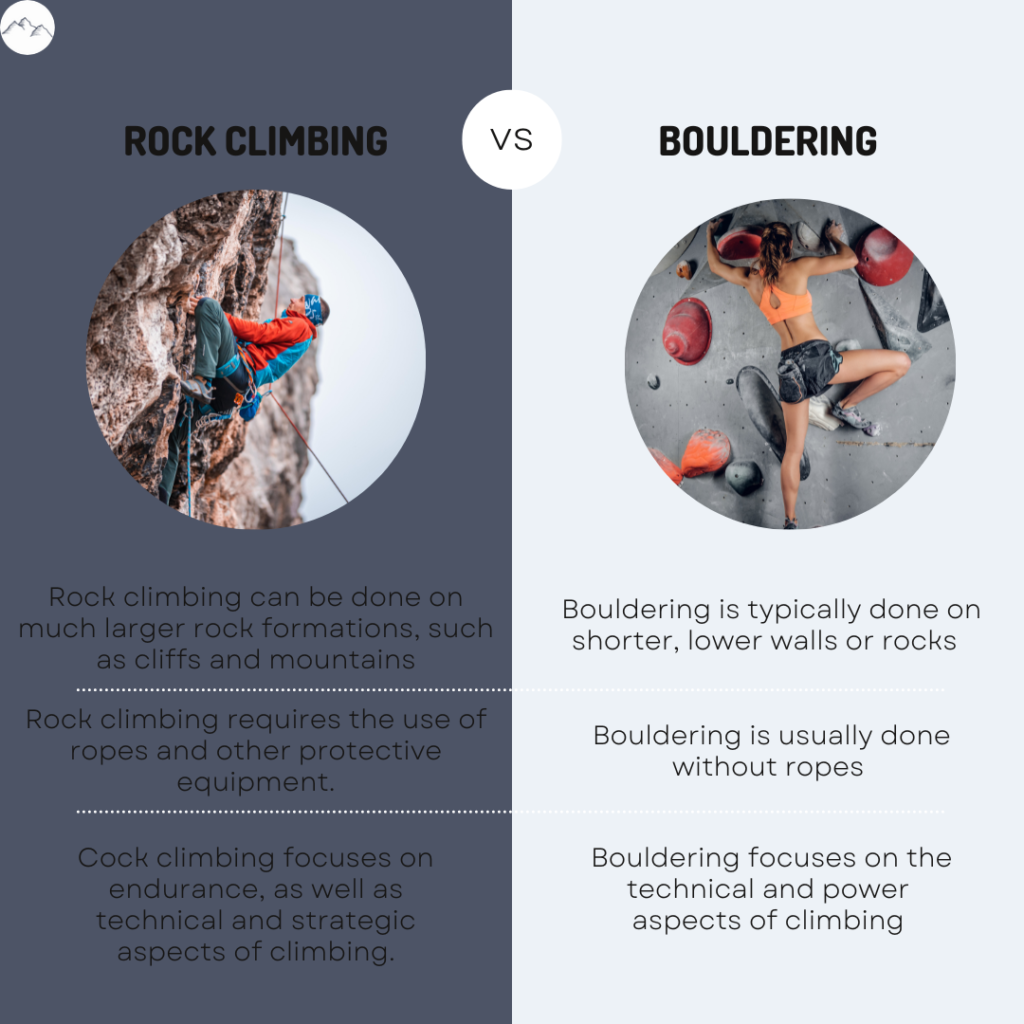
Bouldering and rock climbing are both popular forms of climbing, but they have some key differences. Bouldering is a form of climbing that is typically done without ropes, on shorter, lower walls or rocks. The routes, or “problems,” are usually no more than 20 feet tall and are designed to be challenging, but not necessarily dangerous. Bouldering often takes place in indoor climbing gyms or outdoor boulder fields, and the focus is on the technical and power aspects of climbing.
On the other hand, Rock climbing is a form of climbing that is done on larger rock formations, such as cliffs and mountains, and usually requires the use of ropes and other protective equipment. Rock climbing routes can be hundreds of feet tall and can take several hours to complete. The focus is on endurance, as well as technical and strategic aspects of climbing. Rock climbing can be done both indoors and outdoors. In summary, bouldering is a form of climbing that is typically done on shorter, lower walls without ropes, and rock climbing is a form of climbing that is done on larger rock formations and usually requires the use of ropes and protective equipment. If you are in the market for climbing gear, be sure to check out our article on How to Fit Rock Climbing Shoes!
Is Bouldering Safer Than Rock Climbing?
Bouldering and rock climbing both have their own risks and hazards.
Bouldering is typically considered to be less dangerous than traditional rock climbing because the climbing routes are shorter and the falls are usually not as far. Additionally, boulderers usually climb lower to the ground and use crash pads to protect themselves from falls. However, bouldering can still pose a risk of injury if a fall occurs, especially if the climber lands on a hard surface or if the crash pad is not properly positioned.
Rock climbing, on the other hand, can be more dangerous because the routes are often higher, and the falls can be farther. Additionally, traditional rock climbers often use ropes and other protective gear to catch them in case of a fall, but if the equipment is not properly set up or maintained, it can fail and result in injury or death.
It’s important to note that both types of climbing are physically demanding and require proper training, equipment, and safety precautions. It’s also important to pay attention to the weather conditions and to the state of the rock face before climbing to avoid additional hazards.
Bouldering Pros & Cons
Pros
- It requires minimal equipment and setup compared to traditional rock climbing.
- Bouldering can be done indoors or outdoors, making it a year-round activity.
- It is a great way to practice specific climbing moves and sequences.
- Bouldering is a social activity, and many climbers enjoy the camaraderie of climbing with friends.
Cons
- Falls from bouldering can be dangerous, especially if the climber lands on a hard surface or the crash pad is not properly positioned.
- Bouldering can be expensive, particularly if you are climbing at indoor gyms.
- There is a risk of damaging the rock if proper climbing techniques and ethics are not followed.
- Bouldering is a physically demanding activity and can lead to injuries if proper precautions are not taken.
Overall, bouldering is a challenging and exciting activity that offers many benefits, but it is important to be aware of the risks and to take the appropriate safety precautions. It is also important to respect the environment and to follow proper climbing ethics, such as not damaging the rock or disturbing wildlife.
Rock Climbing Pros & Cons
Pros
- Improved physical fitness and strength with increased mental focus and problem-solving skills
- A sense of accomplishment and personal satisfaction
- A chance to push one’s limits and test oneself
- Bouldering is a social activity, and many climbers enjoy the camaraderie of climbing with friends.
Cons
- Rock climbing requires a lot more heavy gear than bouldering does, making it more expensive
- You need a climbing buddy/belayer to go rock climbing safely.
- Climbing can be dependent on weather conditions
- Risk of overuse injuries if not properly trained or conditioned.
In summary, climbing can provide many benefits such as improving physical fitness, building mental toughness, and providing a sense of accomplishment. However, it also poses risks such as injury and equipment failure, and can be costly due to the necessary gear and gym memberships. Climbing can also be dependent on weather conditions and may not be suitable for those with a fear of heights
Wrapping Up
No matter which activity you ultimately choose, be sure to study the safety rules and regulations related to each hobby. Knowing the precautions that should be taken before and during both bouldering and rock climbing can keep yourself and your companions safe while you enjoy both exciting activities. Additionally, make sure to stay within your skill level and comfort zone – do what’s right for you. Above all else, bring with fully charged adventurous spirit! On that note, are you comfortable going backpacking? Take a weekend trip out into the wilderness with friends or fly solo for an even more serene experience; whatever backdrop makes for the most exciting environment for either boulder or rock climb!

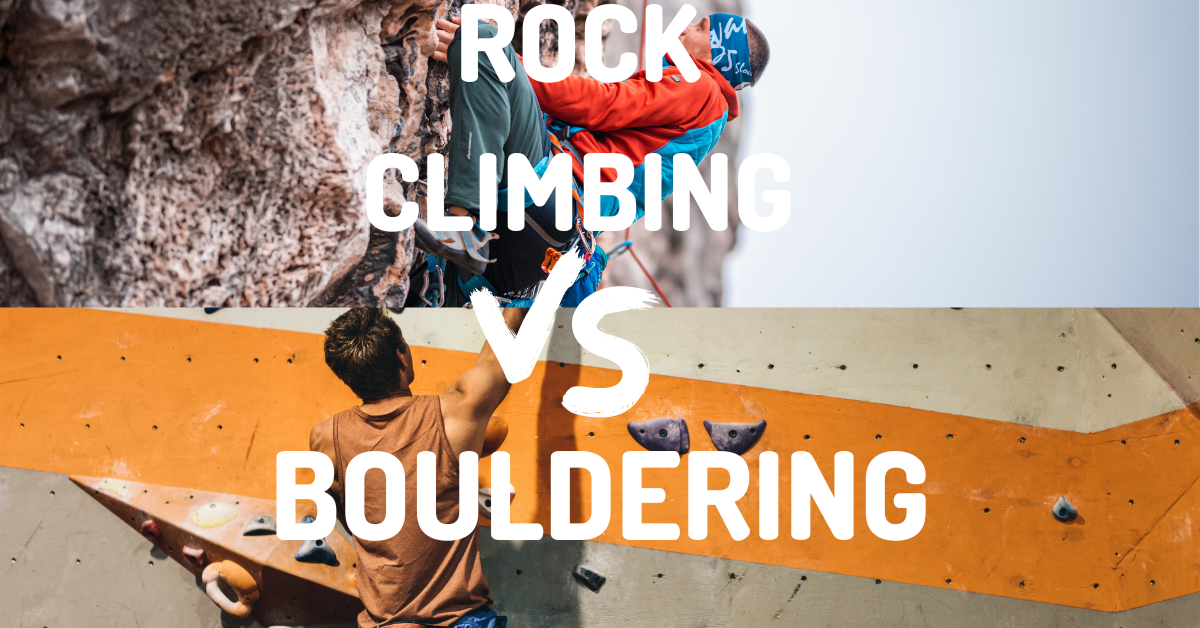
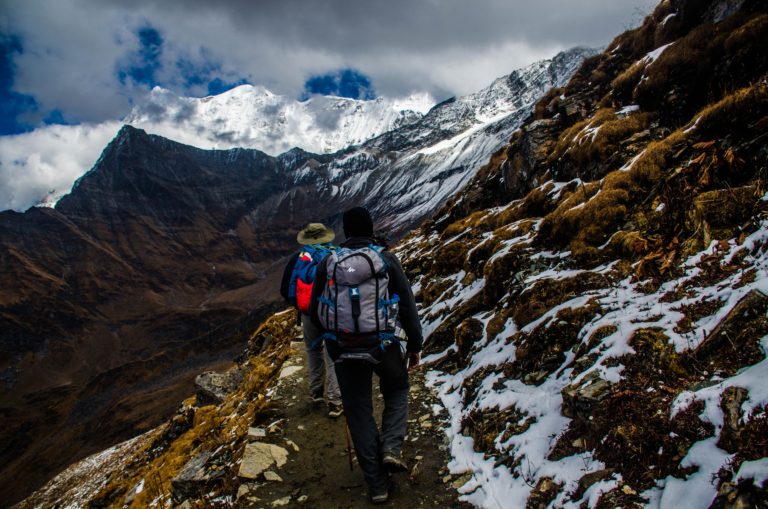
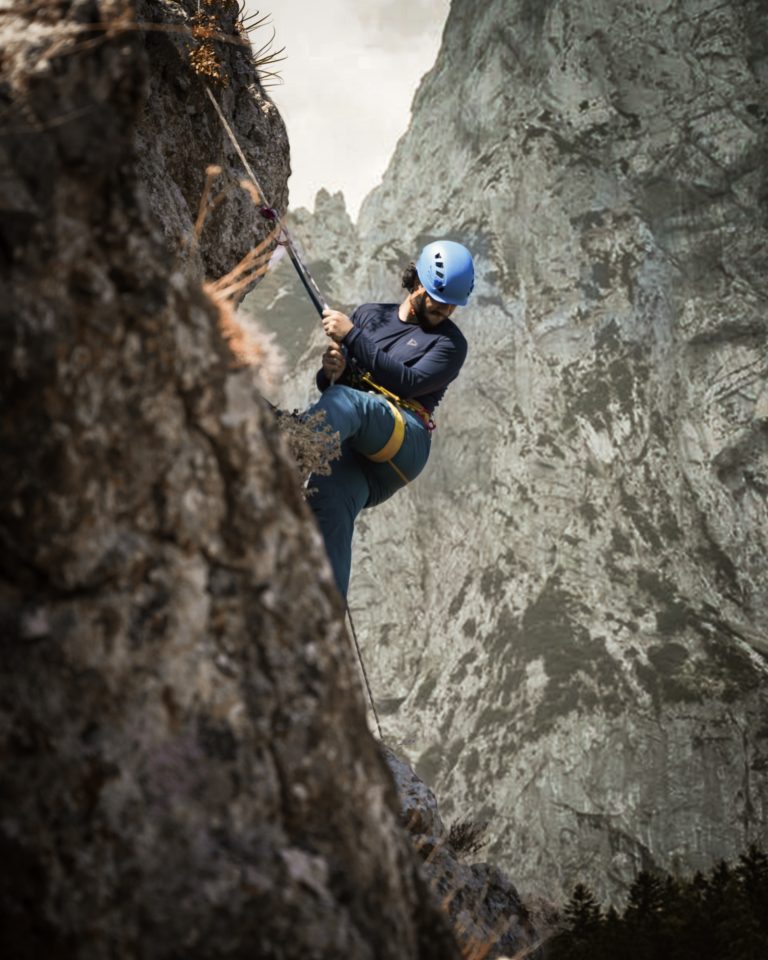


3 Comments